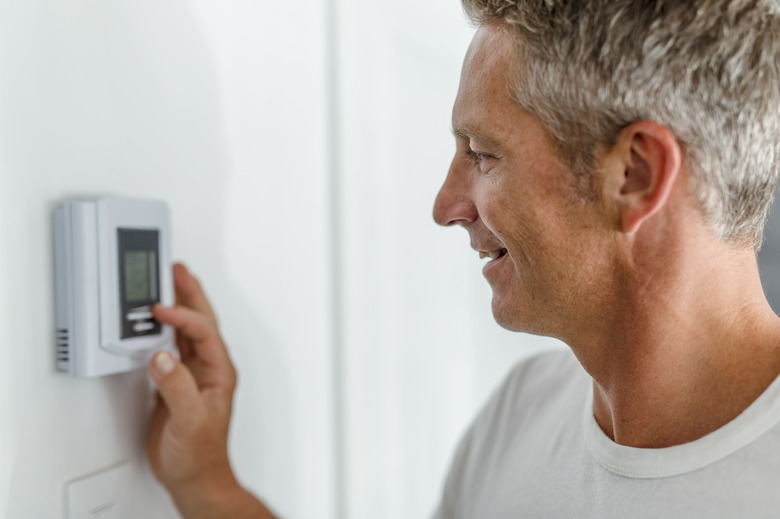Noma Thermostat Instructions
If you have a Noma programmable thermostat, it's important to understand how it works. Whether you are installing the thermostat for the first time or trying to adjust the temperature inside your house, having a thorough comprehension of its user manual can be extremely helpful. Fortunately, most Noma thermostat models are fairly straightforward to use.
Noma Thermostat Basics
Noma Thermostat Basics
Most Noma thermostats are digital and programmable. You can use them to create temperature programs to save money and be more energy efficient when you are asleep or out of the house. Noma thermostats connect to your HVAC system through a series of color-coded wires.
On the thermostat, you will find up and down arrows. These can be used to change the temperature. There is an off switch. You'll need to be sure that this is switched on or no heating or cooling can take place. Noma thermostats also have a heat/cool switch, which enables you to select whether you will be using the heat or the air conditioning. You may also choose to use the fan rather than heat or air conditioning by engaging the fan switch.
Noma Thermostat User Manual
Noma Thermostat User Manual
Refer to your Noma thermostat user manual for specific instructions. The basics tend to be the same from model to model, though. Before using your thermostat, be sure that you have installed the batteries properly. You'll most likely need two AA batteries in order to power on the unit.
You'll need to select either Celsius or Fahrenheit when you first power on the thermostat. This unit choice will dictate how the temperature is displayed. Next, you'll need to set the day and time. The clock has to be set before use.
If you wish to create temperature programs, you can do so at startup, as well. For instance, if you would like your heat to kick on at 5:00 p.m. when you get home from work, then turn down by 5 degrees when you go to bed at 11:00 p.m., create a setting to so that this happens automatically.
Note that the backlight on your Noma thermostat will only come on in the dark. If you press any key when the lights are out, the light will come on for eight seconds at a time. If the light isn't on but it is dark in your house, consider changing the unit's batteries.
Ideal Temperature Settings
Ideal Temperature Settings
Only you can determine the best temperature settings for your home. Your personal comfort level, as well as the size and layout of your residence, will play a large role in determining what the best temperature is for you.
The U.S. Department of Energy recommends setting your thermostat at 78 degrees Fahrenheit when you are at home during the summer. This will help you to stay cool and keep your energy bills low. When you're away, they suggest a setting of 88 degrees. This should keep things in your house from damage but won't cost you very much to run. However, you may wish to keep the temperature lower or higher depending on your comfort level with heat.
Using a programmable thermostat can save you money in both the summer and the wintertime. However, for both energy efficiency and cost savings, it's best that you not lower or raise the thermostat by more than 8 degrees when you're asleep or out of the house. Other things that can help you to save on heating or cooling costs include keeping vents clear of blockages and frequent cleaning of your HVAC system.
